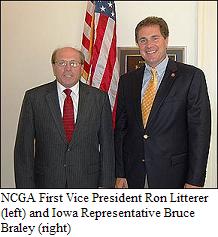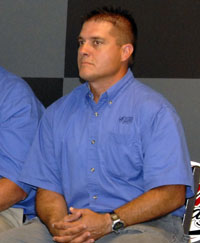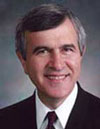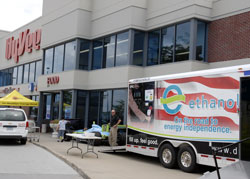 Lawmakers on Capitol Hill have heard more testimony in favor of a bill that would help educate the ethanol workforce. National Corn Growers Association (NCGA) First Vice President Ron Litterer told a House Small Business Committee that the ethanol industry requires a continued commitment in providing a well trained workforce.
Lawmakers on Capitol Hill have heard more testimony in favor of a bill that would help educate the ethanol workforce. National Corn Growers Association (NCGA) First Vice President Ron Litterer told a House Small Business Committee that the ethanol industry requires a continued commitment in providing a well trained workforce.
A news release posted on the NCGA web site says a proposal currently before Congress would do just that:
Litterer said the proposed National Endowment for Workforce Education in Renewables and Agriculture (NEW ERA) Act of 2007would help expand the nation’s capacity to identify and track the new jobs and skills associated with the renewable energy sector. Introduced by Rep. Bruce Braley (D-Iowa), the legislation would also help address skill shortages that are already beginning to affect the expansion of renewable energy facilities through the development and support of national and state skill training programs.
“Ethanol and other bioenergy technologies will continue to play a significant role in reducing our dependence on foreign oil, building up hundreds of rural economies, and creating thousands of new job opportunities across this country,” he said. “In my home state of Iowa there are 28 ethanol plants with more than 1.7 billion gallons of annual capacity; these plants have created more than 27,200 jobs across Iowa, stimulating the local economies and invigorating rural development across the state.“
The bill would give competitive grants, authorized by the Secretary of Agriculture, to community colleges for classes and training for technicians in the bioenergy fields as well as other ag-based, renewable energy sources such as cellulosic.
You can hear an NCGA story with Litterer by clicking here.
You can read Litterer’s testimony to Congress by clicking here.
 Tim Recker is an Iowa corn grower and the president-elect of the Iowa Corn Growers Association. He says that corn growers are very proud of their work to bring the inaugural Iowa Corn Indy 250 to reality.
Tim Recker is an Iowa corn grower and the president-elect of the Iowa Corn Growers Association. He says that corn growers are very proud of their work to bring the inaugural Iowa Corn Indy 250 to reality.

 One of the ethanol pump promotions coordinated by the Ethanol Promotion and Information Council this week was held at
One of the ethanol pump promotions coordinated by the Ethanol Promotion and Information Council this week was held at  Jim Sturdevant has joined POET as its new director in POET’s partnership with the U.S. Department of Energy to build a commercial cellulosic ethanol production facility.
Jim Sturdevant has joined POET as its new director in POET’s partnership with the U.S. Department of Energy to build a commercial cellulosic ethanol production facility. The National Biodiesel Board (NBB) applauded the action in
The National Biodiesel Board (NBB) applauded the action in 
 * Extension of the biodiesel tax incentive through 2010. The provision is based on legislation introduced this year by Representatives Earl Pomeroy (D-ND) and Kenny Hulshof (R-MO).
* Extension of the biodiesel tax incentive through 2010. The provision is based on legislation introduced this year by Representatives Earl Pomeroy (D-ND) and Kenny Hulshof (R-MO). The
The  Agriculture Secretary Mike Johanns is disappointed with the 2007 Farm Bill he sees developing in the House Agriculture Committee for a number of reasons. One of them is lack of funding for cellulosic ethanol research.
Agriculture Secretary Mike Johanns is disappointed with the 2007 Farm Bill he sees developing in the House Agriculture Committee for a number of reasons. One of them is lack of funding for cellulosic ethanol research. Encouraging development of cellulosic ethanol is one of the main goals of the bi-partisan
Encouraging development of cellulosic ethanol is one of the main goals of the bi-partisan  Congressman Putnam said, “By jumpstarting the research and development on cellulosic ethanol, we think it can play a tremendous role in adding value to existing agricultural commodities.”
Congressman Putnam said, “By jumpstarting the research and development on cellulosic ethanol, we think it can play a tremendous role in adding value to existing agricultural commodities.” 